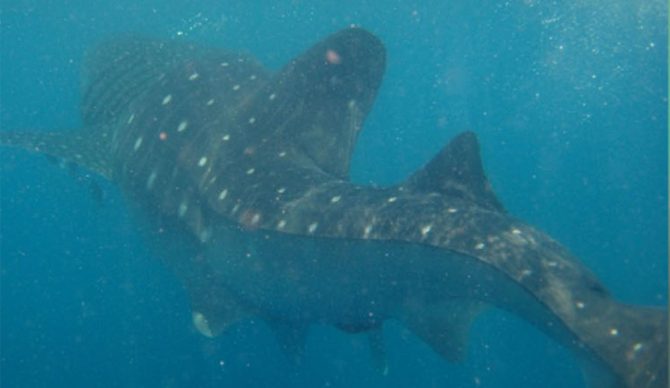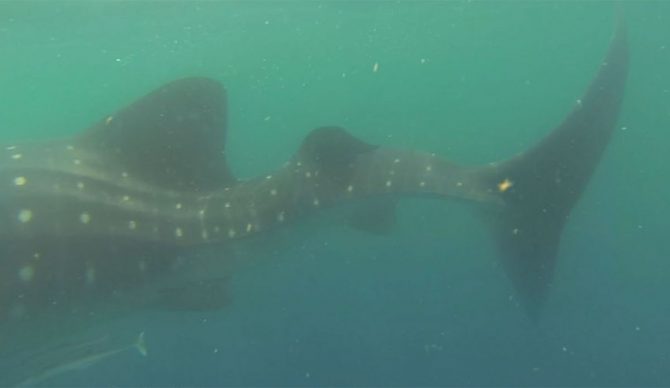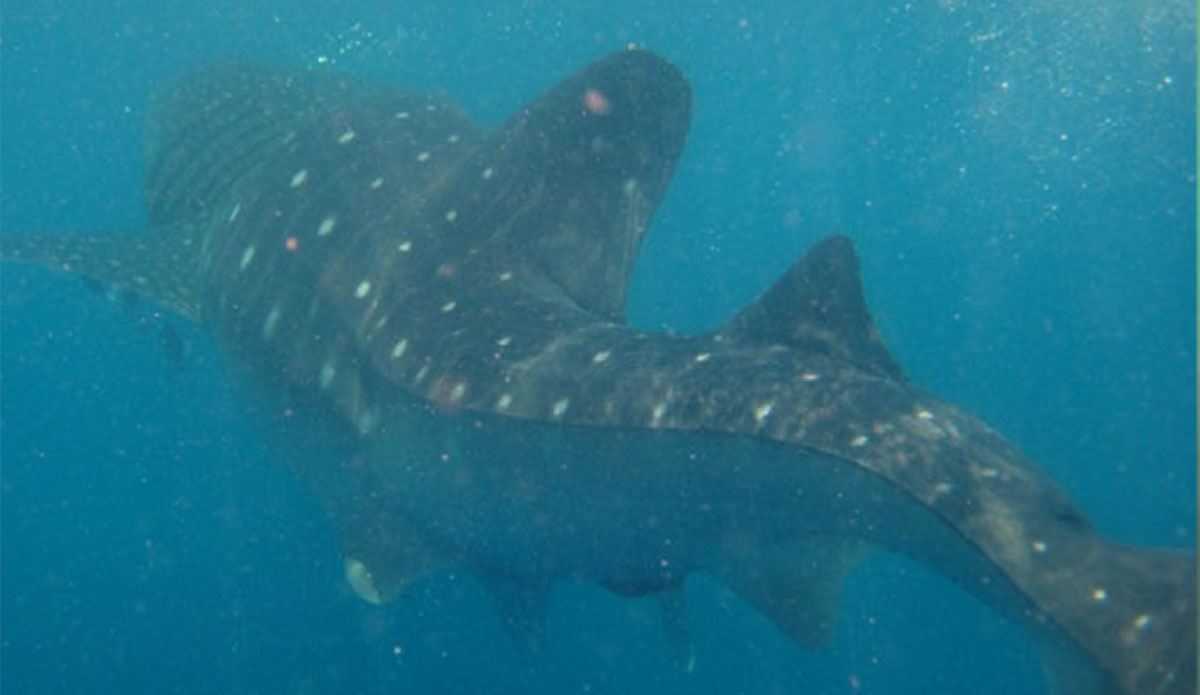
We’re no backiologists, but we’re pretty sure that’s not supposed to be what a whale shark’s spine is supposed to do. Photo: NOAA//Eric Hoffmeyer
![]()
The whale shark is an amazing creature. They’re docile things, huge and powerful, swimming around with gaping mouths hoovering up small shrimp, fish, and plankton. Researchers keeping an eye on whale sharks around the U.S. coastline stumbled into one animal a few years ago with an ailment that likely makes life difficult: a severe spinal deformity that hasn’t ever been recorded in whale sharks.
Researchers who did a study on the whale shark believe it’s a form of kyphoscoliosis, which is “a combined abnormal curvature of the spine in both the sagittal (kyphosis typically >50 degrees) and coronal (scoliosis) planes, often accompanied by axial rotation of the spinal column.” Thankfully, it seems clear that the whale shark is doing okay despite its bent back (Kelly Slater has that in common) and is doing everything a normal whale shark would do.
This particular whale shark was first seen back in 2010 by scientists from the National Oceanic and Atmospheric Administration (NOAA)’s National Marine Fisheries Service. They tagged it and logged it, and the next time they saw it was three yeas later, at which time they plugged a satellite tag onto it so they could watch its movements.
“Despite its condition, the whale shark seemed to be doing remarkably well,” IFLScience wrote. “Over the 98 days the tag remained attached, the shark traveled 2,062 kilometers (1,280 miles) around the Gulf, suggesting the deformity hadn’t stopped the species’ natural inclination to migrate large distances.”

Despite its bent back, the whale shark appears to be doing just fine. Photo: NOAA//Eric Hoffmeyer
If an animal has to have a spinal deformity, a whale shark is decently suited to live with it. Something like a bull shark, for example, might have a harder time. Whale sharks’ prey doesn’t move all that fast, so having an S-bend in its spine isn’t something that will make feeding impossible.
“Although spinal deformities change the body shape of affected sharks and increase the drag an animal experiences while swimming,” the study authors wrote, “whale sharks do not have a great need for speed compared to their prey, like other pelagic sharks, as they are filter feeders.”
Although it isn’t exactly clear why the shark has the bent back, it’s likely that it was born with it. The researchers aren’t able to say that with certainty, however.
“Although trauma caused by a ship strike or entanglement in fishing gear occurring early in the life of the shark cannot be definitively ruled out,” they wrote, “direct observation of this whale shark in the wild on two occasions and further inspection of photographs and videos showed no obvious indication of this level of trauma (e.g., scarring or restitching of the spot pattern), suggesting the spinal deformities were most likely indicative of being congenital, having slowly progressed over time.”

